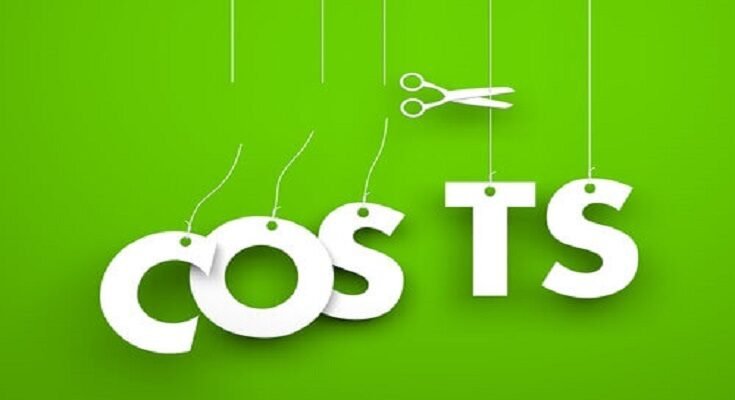You must come across account terms that you don’t know when you look at income statements and balance sheets. It’s time to understand these terms. As it will help you understand your financial statements better. And it will also improve the fiscal health of your business.
One most commonly used term by business owners is “operating costs.”
Curious to know what operating costs are precisely and how they will affect your business? This article is a complete guide for you to understand operating costs. Read on to find more.
What are operating costs?
The day-to-day administration and maintenance costs are known as operating expenses. The main component of operating costs is COGS (Costs of Goods Sold). COGS are the direct expenses attributed to generating your business’s services and goods.
In addition to this, operating costs also consist of the following:
- Labor costs, such as payroll
- Employee health insurance, pensions, and other benefits
- Sales commissions
- Depreciation
- Amortization
- Maintenance costs
Every business needs to know how to calculate these operating costs. Because at the end of the day, reducing operating costs will directly impact the profitability of your business.
Understanding Operating Costs
You need to understand your operating costs in-depth as it enables you to derive relevant business ratios and figures. Associated with it are two important data points operating income and operating expense ratio.
You can determine the operating income by operating costs. It is the total profit linked with your business operations. The formula is:
Operating Income = Revenue – Cost of Goods Sold – Operating Expenses
For instance, Amazon had $280.5 billion in sales in 2019, with the cost of goods sold $165.5 billion and operating expenses $100.5 billion. So, their operating income for the year 2019 was $280.5 – $165.5 – $100.5 = $14.5 billion. Hence, it indicates an increase of 17% in that year.
The operating expense ratio is another thing that can be derived from operating costs. It gives a direct comparison of your business expenses to your income. It ultimately lets you track the efficiency of your business.
The formula for operating expense ratio is:
Operating Expense Ratio = Operating Expenses / Revenues
For instance, company A has been comparing its operating expenses for a piece of property it bought. Now, it is trying to find its operating expense ratio. Its operating expenses are $40,000, and revenues are $400,000. So, $40,000 – $400,000 is equal to 10%.
If the business compares itself to other companies in the industry, it can easily interpret the operating expense ratio. Operating expense ratios vary from industry to industry. You should be focused on how to rank best in your industry. If you adopt a strategy to beat or meet the industry average, you will be successful.
How to cut operating costs?
Refining your operating costs shows that you are putting yourself ahead of your competitors. Small businesses should always find ways to decrease their operating costs without sacrificing the quality of products and services. And even without making the lives of their workers difficult.
Here are eight ways you can reduce your operating costs. Thus, reducing overhead and generating more profit.
· Adopting technology
One way to streamline and automate your business functions is through POS software. And it covers a wide array of operations such as employee management, ticket management, marketing, etc.
Technology is beneficial because it promotes efficiency. Increased efficiency can reduce the operating expenses of that area, for instance, direct labor. POS software can work faster than a human with fewer mistakes.
So, look for a system that works best for your business to achieve ultimate output.
· Outsourcing
You can even raise the efficiency of your business by outsourcing some of your work to a third-party specialist.
For example, if you don’t have a tax background; you might find it challenging to decrease your property taxes or lease payments. For that, you will need a trained professional who can help you.
One area that gains more benefit from outsourcing is marketing and advertising. For many business people, this is a pain point. They feel that the time they spend on marketing and advertising does correlate to the ROI. But they don’t have enough time to run marketing campaigns.
While it might seem that a third-party vendor will increase costs. But in the long term, delegating tasks to experts in the field will save costs and generate better results. Outsourcing specific tasks is an investment that gives dividends with time.
· Look for better rates.
Being a business owner, you must have vendors from whom you purchase products. If that is so, you should consider setting up a bidding system for work and projects.
For instance, for a single product, you can ask different vendors to give costs. This way, you will increase competition, and they will automatically bring down prices to score a sale.
Ensure you compile a specific request for proposal or scope of work for all the vendors to bid on. If you miss any important information or add a complexity, it will affect the rate.
Also, having an accurate rate will give you a better plan for expected operating expenses.
· Telecommute
Paying utility costs, leasing office space, and looking after a physical office can drain your financial resource. Try allowing your employees to telecommute to reduce total costs.
With connectivity being quite simple today, the only difference between an employee sitting at home and an employee sitting in the office is practically indiscernible. Employees will find this advantageous because it will cut down their commute expenses and time.
· Pay invoices on time or early
Most vendors give discounts if you pay them early. A saving of even 2-3% can add up to a significant amount.
For example, your yearly operating cost is $100,000. Let’s say by paying early to the vendors; you can save 2%. So, you will end up saving $2,000 per year.
If you cannot pay early, then deliver on time to save yourself from late fees. The same applies to debt or loans. Provided that you have taken any. Don’t let interest rip you off.
· Identify inefficiencies
Always find more ways to make your business run efficiently. By tightening up your procedures and processes, you can decrease the waste in both time and materials.
Encourage your employees to pinpoint inefficiencies and give solutions to fix those. You can provide an incentive to employees who step forward to identify inefficiencies.
Again consider this as an investment in your business. A small incentive to an employee can help you save thousands of dollars.
· Withdraw from unused services
Scan your variable costs and figure out the services that you no longer need. If you have not used a service for a few months, consider a cheap plan or cancel it. If these services are not in use, they won’t let you improve your operating income.
You can quickly lose track of services that you don’t use. Specifically, if it’s on auto-pay on your debit or credit card. Even if you come across a service you want to keep, try finding a cheaper alternative.
· Go green
Going green is always a good option. If you have an office, decrease energy usage by replacing bulbs with fluorescent lighting. Try finding lower cooling and heating options. Also, cut back on physical waste.
Going green will help you save utility costs and save monthly office supplies.
If you are a business owner who monitors expenses and income without a detailed breakdown, then it’s time to change that. With the growth of your business, understanding operating costs will become vital.
Once you recognize your costs, you can practice the eight approaches that we’ve given to start cutting costs and boosting profits.




